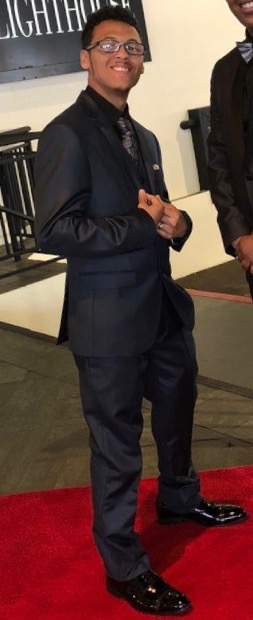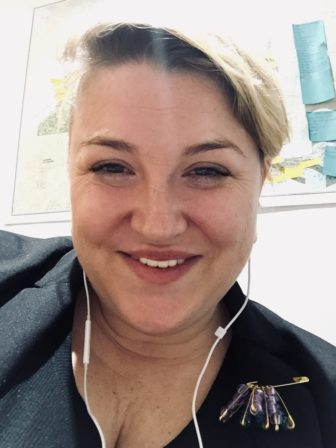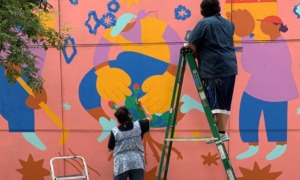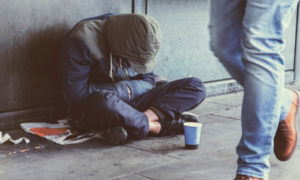
Syda Productions/Shutterstock
.
The epidemic of youth homelessness is rooted in oppression, white supremacy and, more specifically, a social service culture that too often pits populations against each other and has granted individuals (politicians, government, nonprofit organizations) the power to determine who is deserving of what. Therefore, they also have the ability to design entire systems based on extremely biased ideologies that often harm those who they are tasked with supporting.
We (society) have created homelessness systems that — rather than just giving young people housing — make them do two backflips, learn another language and donate their own dignity before they can be put on a waitlist to be considered for housing. Imagine what would happen if we just gave youth experiencing homelessness housing, with being homeless the only qualifying criteria? It would seriously reduce the harm that is being inflicted by the current systems, and would also decrease future harm, because the young person would be housed.

Lyndon Chris Hernandez
Housing First is the idea that people experiencing homelessness should be connected to permanent housing as quickly as possible, without any preconditions and barriers. This idea of giving people that need housing housing without all the hoops we cited above, is credited to Sam Tsemberis. In 1992, he founded Pathways to Housing in New York City on the belief that housing is a human right.
However, like all great ideas, it took a long time for the government, specifically the U.S. Department of Housing and Urban Development (HUD) to agree with the extremely radical idea that people who don’t have a place to live deserve one. It wasn’t until a few years ago that HUD started to mandate that their grantees use a Housing First approach. So why are youth still homeless?
Research shows that not all youth experience homelessness the same way, at the same rate or for the same amount of time. On any given night in New York City, there are approximately 4,500 youth under the age of 25 who are sleeping in the shelters or on the streets. Of those youths, 95% of them are youth of color. In the total youth population ages 14 to 24, youth of color represent about 75%.
Forty-two percent of them identify as LGBTQ, compared with about 7% of all youth identifying as LGBTQ. In addition, nearly half of all homeless youth identified in a national research study had been in juvenile detention, jail or prison. In order to address the needs of youth experiencing homelessness, we must ensure that approaches such as Housing First are equitable, and not just in theory, but in practice.
Systems, programs must not be adultist
As more resources (aka $) are allocated to meet the needs of youth experiencing homelessness, we must hold systems and individual programs accountable to ensure they are incorporating harm reduction approaches and truly incorporating Housing First interventions. Systems, as a whole, must prioritize the needs of homeless young people in the way that they grant benefits, develop permanent housing and assess need.
We cannot declare we are giving youth a pathway out of homelessness if the supports they are eligible for are attached to specific system contacts, as opposed to their lived experiences. We cannot consider a young person “housed” after we give them a voucher when the reality is that due to rising housing costs and gentrification, it is unlikely they will ever find a landlord who will rent to them. And when developing housing policies, we cannot base our thresholds on the most high-functioning youth.

Jamie Powlovich
At the programmatic level, we must demand that providers move away from punitive approaches and meet young people where they are, which is different than adults deciding what they should be doing and holding them to adultist standards. We cannot allow programs to get anti-trafficking funding that punish youth for engaging in sex work to survive and then refuse them housing when they get arrested for solicitation. Nor can we allow programs that provide “trauma-informed” services to justify homelessness as an appropriate consequence for a young person smoking weed, coming in late or not going to school. But we do.
By voting for politicians who do not care about ending youth homelessness, we are creating harm. By allowing government resources to be directed toward programs that are not meeting the needs of the youth they are funded to serve, we are creating more harm. By not questioning and advocating against policies that are discriminatory and ineffective, we are creating even more harm.
Young people know what they need. Listen to them. Young people know what programs are doing the best work. Fund those programs. We believe that housing is a fundamental human right, and that young people experiencing homelessness have already endured too much harm. We should not be supporting and expanding systems and programs that are harming them further. We must do better.
Lyndon Chris Hernandez is a youth peer advocate/community organizer in New York City. His goal is to ensure the voices of youth are heard and to understand anything is possible as long as you believe in it.
Jamie Powlovich is the executive director of the New York state Coalition for Homeless Youth. She has dedicated her life to fighting to end youth homelessness and ensuring that youth with lived experience are collaborative partners in the movement.































